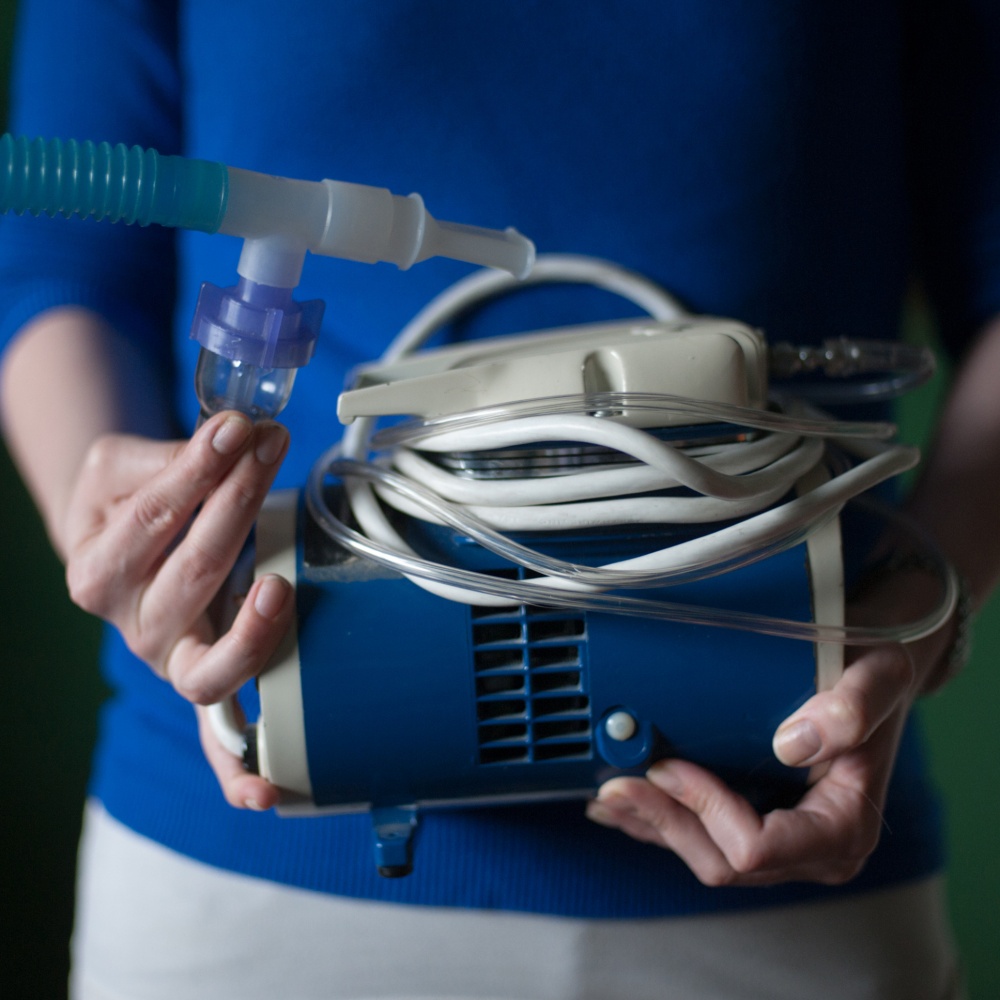If you’ve ever tried to drink something through one of those little red coffee stirrers instead of a full-sized straw, you know what it’s like to breathe with asthma.
Twenty-five million Americans have been diagnosed with asthma. And for 10 percent of them, medications like inhaled corticosteroids and long-acting beta agonists aren’t enough to keep them out of the hospital.
In 2010, the FDA approved bronchial thermoplasty, the first nonpharmaceutical treatment for severe asthma. People are starting to try it. Virginia Rady is one of them.
Rady has had asthma since she was a toddler. She tried to go away for college, but after a bad flare-up first semester, she moved back home. She’s now 28, but her lungs are like those of a 65–year-old. If something triggers her airways to twitch and close up, it could be deadly. That means avoiding everything from cats and dogs to exercise and stress.
“If I were to get really emotional,” says Rady, who lives outside Dallas with her husband, “I could actually trigger an asthma attack.”
Inhaled drugs and other medications offer temporary relief for most asthma patients. Bronchial thermoplasty, on the other hand, is intended to reduce asthma symptoms permanently.
So when Rady heard that bronchial thermoplasty that might help her decrease the number of pills she takes, she was intrigued.
The procedure attacks the problem at its very root — the muscles in the lungs’ airways. During an asthma attack, muscle cells contract and restrict airflow. To keep the muscles from constricting, a catheter is used to deliver heated zaps of energy that essentially burn off the outer layer of smooth muscle cells. That way there’s less muscle to contract.
Studies of the procedure have not shown that it reduces airway hyperresponsiveness or the amount of air a person can exhale. But it does seem to improve people’s quality of life.
One study found that patients who underwent the procedure, which requires three sessions, saw the number of asthma attacks drop by a third, on average, and emergency room visits decline by 70 percent. They also lost far fewer days from work and school. The study was funded by Boston Scientific, the company that created bronchial thermoplasty and sells the machines.
“We go into airways that are 3 millimeters or bigger,” says Dr. Gary Weinstein, a pulmonologist at Texas Health Presbyterian. “And we’re heating them up. It doesn’t get that hot — about as hot as a cup of coffee.”
Weinstein has performed bronchial thermoplasty on more than two-dozen patients, including Rady.
Studies haven’t found major safety issues so far. But more research is needed to figure out which patients might benefit, how long the effect lasts and long-term safety.
The biggest drawback to bronchial thermoplasty seems to be the immediate response to the treatment, which can temporarily make symptoms worse. “It’s like shoving a stick at a hornets’ nest,” Rady says. “In the days afterwards, you’re wheezing. It’s not pleasant.”
But for Rady and other patients, when the symptoms caused by the treatment subside, it’s life-changing.
Rady has been waiting to have children until she can taper off her steroids. Now that she has decreased her medications and is able to go outside and exercise regularly, Rady says, she’s building up the stamina to be a mother.
“I’m up to 30 minutes on the elliptical and can walk a half-hour after,” Rady says. “I can actually do all of that without the inhaler. And that to me is the awesome thing — not needing the drug.”
Bronchial thermoplasty isn’t a magic wand. It doesn’t cure severe asthma, and it can be costly — treatment can run into the tens of thousands of dollars. Many insurers don’t cover it because they consider it an experimental treatment.
But in 2012, Medicare agreed to pay for the catheters used in the treatment, and other insurers may follow.
Rady did persuade her health insurance provider to cover the majority of the cost — she paid a total of $5,000 out of pocket — but says she was denied coverage at first.
“I would think that anything they could do to keep me out of the hospital is worth it,” Rady says. “One of my hospital bills in high school was $40,000. So in my opinion if you can get this and avoid just one hospitalization, it would more than pay for itself.”
The procedure may be part of a move toward tailoring treatment based on the type of asthma a person has, according to Dr. Gaetane Michaud, an associate professor at Yale School of Medicine who has been researching bronchial thermoplasty for more than a decade.
“Bronchial thermoplasty certainly has its place,” Michaud says. “I think we just need to understand more who it is right for.”
9(MDA3MTA1NDEyMDEyOTkyNTU3NzQ2ZGYwZg004))
